… with the Lambeth Cycling Campaign yesterday, otherwise known as “Benny’s Summer Spectacular”. (Thanks Benny!)
Hastings is that classic grand old lady down on her luck. There’s enough historic, impressive architecture here to really rival Brighton, but although it seems a bit improved from when I was here last, there is still a very long way to go.
At the railway station is a grand new entrance, all curtained glass walls – you don’t need a photo, you know the score, a square lump that bears no relationship at all to its surroundings. Someone commented however that with new environmental standards such architecture will disappear quickly; it will probably very quickly look as dated and anachronistic as the tall Fifties office block opposite, which appeared to be at least part abandoned.
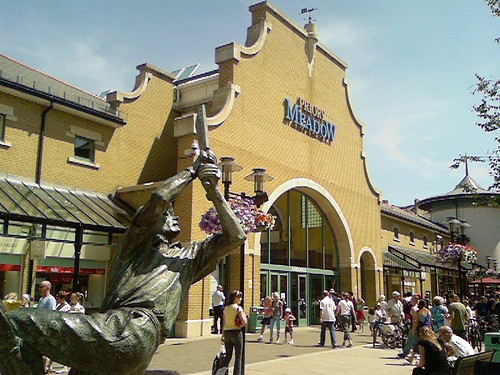
Next up we passed through another new development – a shopping centre. I suppose, as these go, with it built around a modern square that at least provides air and sunlight, this isn’t as bad as it might be. Appropriate really since as the statue attests, this was built on the old cricket ground. (Hardly the same level of activity among users, however.) And Benny pointed to the horrible proportions of the circular towers at each end – I suppose it is an attempt to refer to the Norman castle on the hill just above, but not a particularly successful one. And you have to wonder why new shops were needed, rather than redeveloping old buildings along the front.
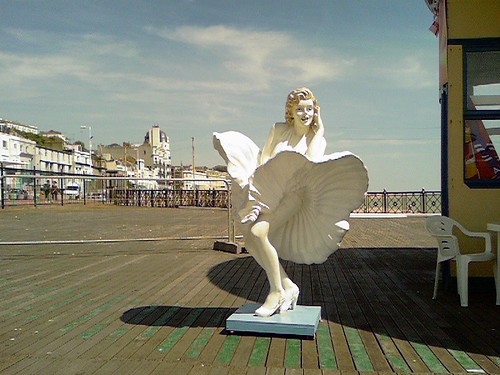
Going back to an even more miserable time for Hastings, the near-derelict pier, with the few remaining traders in conflict with the council. I thought this tacky, battered statue of Marilyn probably summed up the second half of the 20th century for the town pretty well. Opposite, however, is what is now an official building, a 1920s-built “American mission style” building, a reminder that there was still money around in the first half of the century.
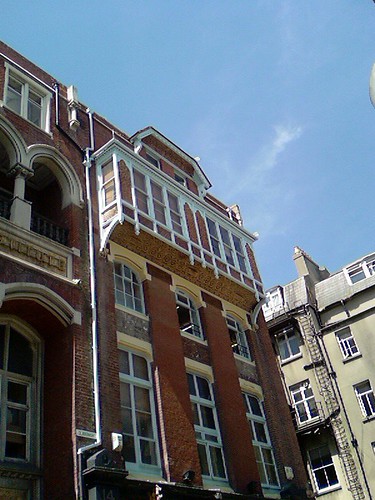
The 19th-century was, however, a good time, at least so would be suggested by the library, a combination of Arts and Crafts (the fancy graffito, achieved by putting on different layers on plaster of different covers and cutting through them) and “Queen Anne” (those solid brick pillars). I only had the cameraphone, so you can’t really see the details of the graffito, but it is very fine.
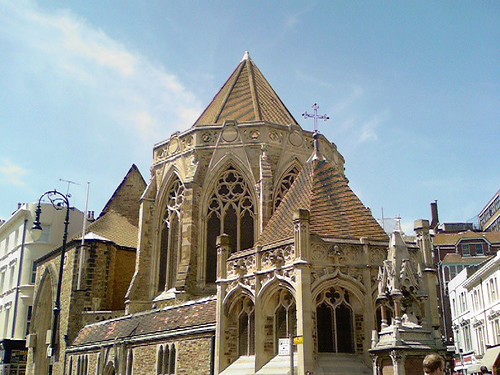
Nearby is the Victorian Gothic church, sitting firm and foursquare at the end of a vista leading up to the castle – a rather better effort at an echo than the shopping centre.
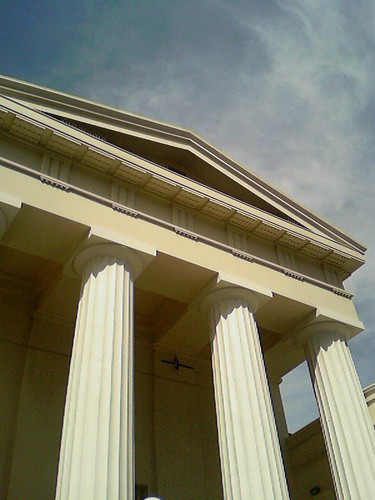
Then it was a run down the seafront (with a reasonably good cycle path) to St Leonards – and the real glory days, when this was being developed in the fashionable resort. These Doric columns on the nicely proportioned Assembly Rooms are highly reminiscent of the British Museum. (There’s a contemporary engraving of these Assembly Rooms here.) In front of it is what was to be THE hotel, now horribly hacked around architecturally. Stretching either side of it are arcaded parades of shops with heavy but pleasing columns – which curiously reminded me of Malacca in Malaysia. (I suspect the influence ran from here to there, rather than the reverse, however.)
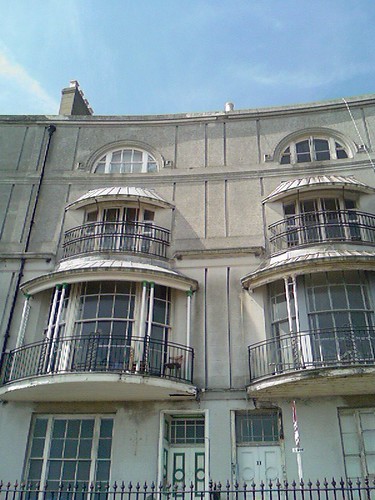
Back into Hastings and perhaps the most disgraceful neglect. Pelham Crescent, a tight curve of Georgian terraces with at its centre the classical St Mary in the Castle, is in a terrible state. (There’s a broader view in Hasting’s Wikipedia entry.) One’s for sale, should anyone want to start a rescue mission. Georgian terrace for £130K – should be snapped up! (Although there might be some serious repair bills in future…)
The fact that Barbara Leigh Smith Bodichon lived here as a child is an indication of its grander past.
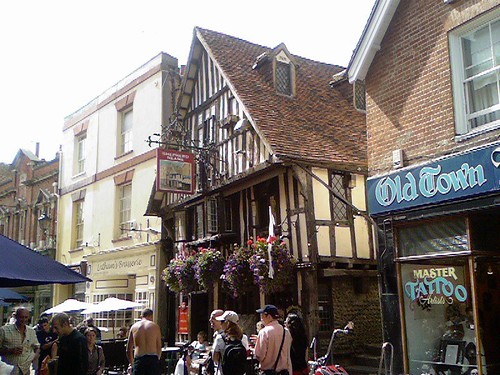
Then we wound our way out of Hastings through the Old Town – the most gentirified bit, with its glorious range from medieval to Victorian. Then came The Hill. You’ve only got to look at the geography of the town to see there would be one. But we got up eventually, and one or two of our party of 36 even cycled the whole way. (No, not me.)
Then we got the reward – the fast spin down the hills again to sea-level, or rather below, on the Romney Marsh, with the sea wall towering away on our right. You have to wonder for how many more years the sea will be held back. There’s a little huddle of modernist houses directly behind it, in a hamlet whose name now escapes me. I really wouldn’t care to be there on a stormy winter night.
But Winchelsea – the planned medieval town built to replace its drowned predecessor will probably be safe (judging again by the hill into it). The smallest town in Britain, it is struggling by co-operative effort to save its shop – we did our bit to boost this week’s takings before flopping in the churchyard for the (rather late) picnic.
The church was to be a grand cathedral, but only the chancel survives (and perhaps the nave was never finished) for the town never reached even a third of its planned size. But it is very fine inside, and it boasts a remarkable amount of figurative sculpture – perhaps because this was a backwater it survived Reformation excesses better than other places.
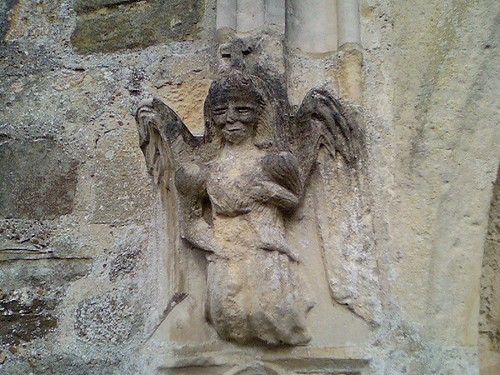
I was taken by this cross-looking angel outside the entrance, but there’s lots more inside…
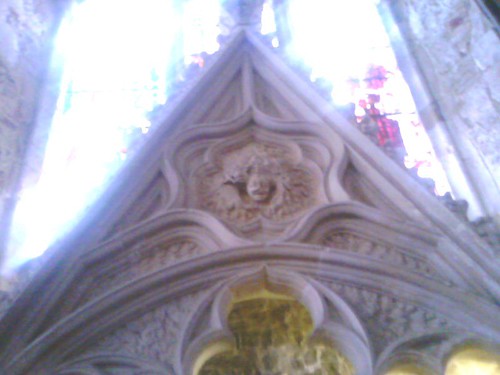
Two “Green men” (with boughs well-decked with leaves emerging from them) in the tombs on the northern side, and…
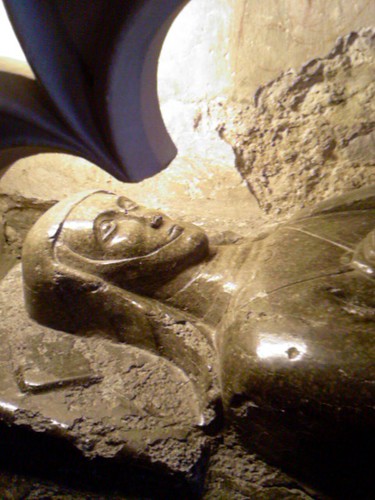
Some lovely effigies, this I think of a monk, his name now lost. (The others are armoured, so presumably local nobility, although the British Library has a sketch of one of the southern tombs which is says is of a Knights Templar. It shows that by the 18th century this was already of antiquarian interest.)
Then it was on to Rye, past Henry VIII’s now derelict Camber Castle (pulled down in the Civil War).
I confess that I’m not a great fan of Rye – I suppose you shouldn’t condemn a town for making the best of its resources, but it is a place ye olde worldied to within an inch of the Disney. We arrived in the middle of the annual “Siege and Fayre”, although the siege had packed up for the night. But there was an associated musical performance in the church….
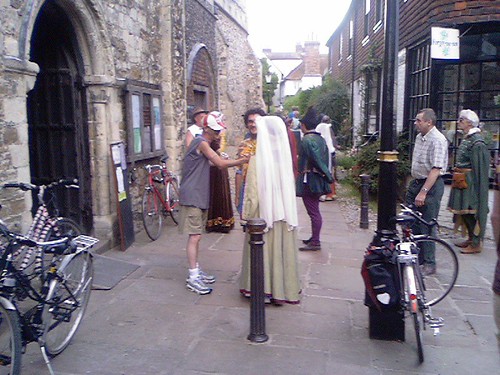
Bicycles and medieval “nuns” and “friars” (what’s more French-speaking “nuns” and “friars”) made an interesting combination.
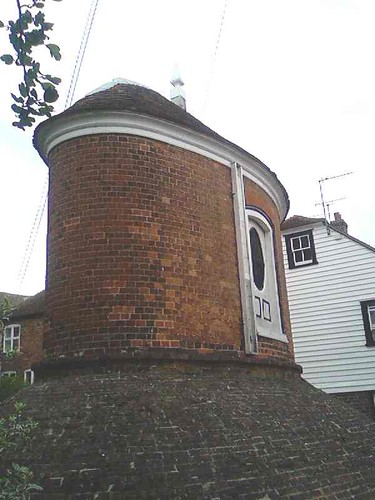
Around the back of the church is a stunning 18th-century cistern.
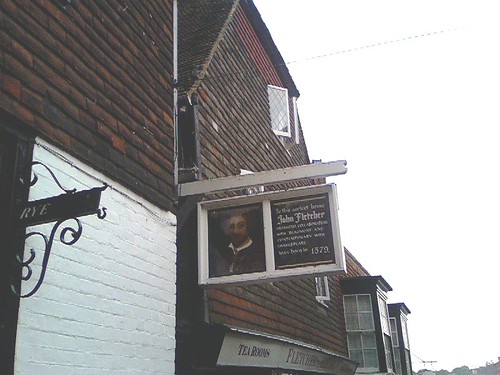
Opposite the church is the house where John Fletcher was born. Well so says the sign anyway … call me a sceptic.
Some stayed for a drink in a nicely olde worlde pub, but previous experience suggests that the trip home is always the worst part of these days – British railways again lived up to expectations: a screaming child from Rye to Ashford, and a long wait at the notably bleak Ashford Station. (Why is it that station cafes never stock a single item of food that you’d actually choose to eat?) But still, it was worth it, for an interesting, wide-ranging day…

 About
About
2 Comments
Pingback: Garden of England Cycle Route: London-Dartford - Philobiblon